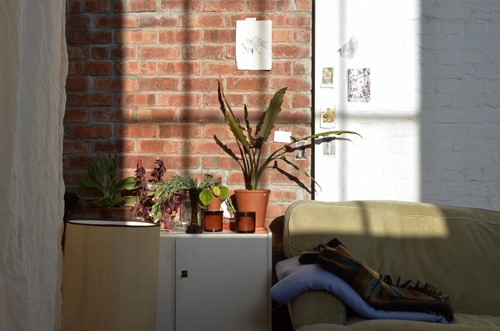
If you're purchasing a new construction, consider the benefits of a passive solar home. Unlike simple solar panels that attach to your roof, architects design passive solar homes from the ground up, taking into consideration such elements as building site, position and materials. True passive solar homes collect heat throughout the day and store it to provide comfort throughout the night. They're attractive, cozy, and they're highly energy efficient.
Passive solar homes are environmentally friendly alternatives for new homeowners who want to save generous dollars on the costs of home heating and cooling.
What Are the Features of a Passive Solar Home?
To be a truly passive solar home, your new construction needs six important elements, including:
-
An Aperture
-
A Distribution System
-
An Energy Absorber
-
Thermal Mass
-
A Collection Control
-
Sunshine
South-facing windows provide the opening, or aperture, for summer and winter sun to enter your home. Control elements such as roof overhangs, awnings or blinds limit the amount of sun that's able to enter. Inside your home, features such as dark-colored masonry walls or floors collect heat and transfer it to your home's thermal mass. A distribution system then distributes the collected heat throughout your space.
A properly designed passive solar home allows just enough light to enter to heat your home without overheating it. At night, when temperatures drop, the heat-collecting surfaces inside your home emit enough warmth to keep your family comfortable.
What Are the Benefits of a Passive Solar Home?
The most obvious benefits of passive solar designs are that they're eco-friendly, even more so when builders use green materials during construction. Additionally, this type of structure can save homeowners thousands of dollars annually on heating and cooling costs. Some other advantages include:
-
Passive solar homes feature an abundance of natural light.
-
The style boasts a modern, upscale appearance.
-
These homes maintain stable temperatures year-round, meaning they're always comfortable.
If you build a passive solar home, you'll marvel at how well it functions and how much money it saves you throughout your lifetime. These homes are adaptable to fit a range of architectural styles, and they have a low-impact on the planet.
Are There Disadvantages to Passive Solar Construction?
While a well-built passive solar home will function exceptionally well, one that's poorly designed or implemented will be just as uncomfortable. It takes a great deal of knowledge to design a solar home that does what it's supposed to do. This means contracting with an architect who's experienced in solar design, which could be a costly option.
Next, consider how the land around your new home could function in the future. If tall buildings go up, they could block your south-facing access to the sun. Tall trees could do the same. No sun means no heat for your home. For this reason, many people choose secluded, off-grid locations to construct passive solar homes.
Lastly, an abundance of natural light entering your home feels open and inviting, but it may also cause carpets and furniture to fade prematurely.
If you're ready to build your dream house on your dream lot, a passive solar home could be a viable and sustainable option.
About the Author

Robin Brady
Hi, I'm Robin Brady serving the Myrtle Beach SC area and the triad area of NC which consists of Winston Salem, High Point, Greensboro, Lexington and surrounding counties and I'd love to assist you. Whether you're in the research phase at the beginning of your real estate search or you know exactly what you're looking for, or you would like to talk to me about selling your home, you'll benefit from having a real estate professional by your side. Call me!
Welcome Home Realty, LLC 336-416-3652
Coastal Properties of Myrtle Beach 843-808-1400

